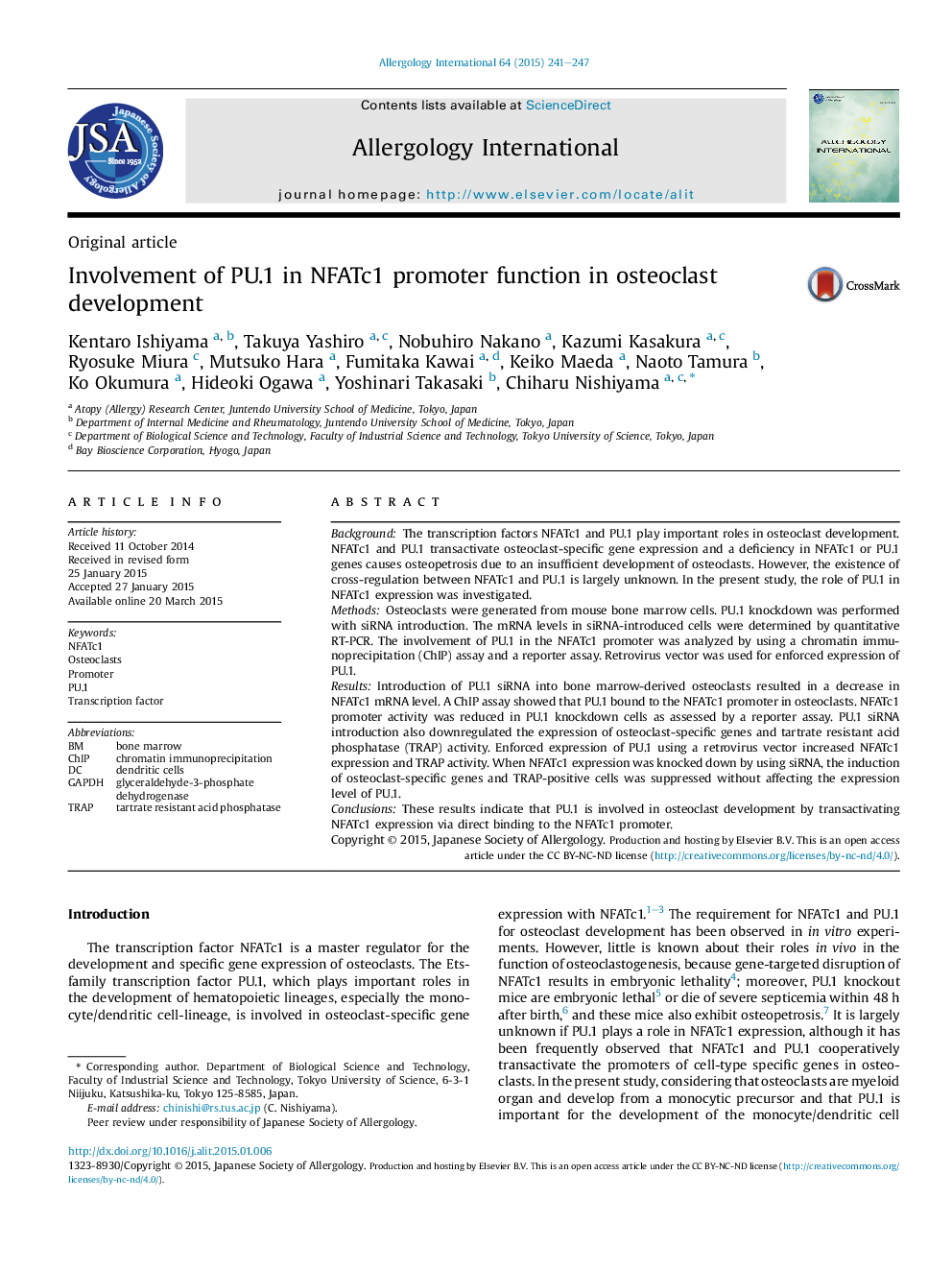| Article ID | Journal | Published Year | Pages | File Type |
|---|---|---|---|---|
| 3340621 | Allergology International | 2015 | 7 Pages |
BackgroundThe transcription factors NFATc1 and PU.1 play important roles in osteoclast development. NFATc1 and PU.1 transactivate osteoclast-specific gene expression and a deficiency in NFATc1 or PU.1 genes causes osteopetrosis due to an insufficient development of osteoclasts. However, the existence of cross-regulation between NFATc1 and PU.1 is largely unknown. In the present study, the role of PU.1 in NFATc1 expression was investigated.MethodsOsteoclasts were generated from mouse bone marrow cells. PU.1 knockdown was performed with siRNA introduction. The mRNA levels in siRNA-introduced cells were determined by quantitative RT-PCR. The involvement of PU.1 in the NFATc1 promoter was analyzed by using a chromatin immunoprecipitation (ChIP) assay and a reporter assay. Retrovirus vector was used for enforced expression of PU.1.ResultsIntroduction of PU.1 siRNA into bone marrow-derived osteoclasts resulted in a decrease in NFATc1 mRNA level. A ChIP assay showed that PU.1 bound to the NFATc1 promoter in osteoclasts. NFATc1 promoter activity was reduced in PU.1 knockdown cells as assessed by a reporter assay. PU.1 siRNA introduction also downregulated the expression of osteoclast-specific genes and tartrate resistant acid phosphatase (TRAP) activity. Enforced expression of PU.1 using a retrovirus vector increased NFATc1 expression and TRAP activity. When NFATc1 expression was knocked down by using siRNA, the induction of osteoclast-specific genes and TRAP-positive cells was suppressed without affecting the expression level of PU.1.ConclusionsThese results indicate that PU.1 is involved in osteoclast development by transactivating NFATc1 expression via direct binding to the NFATc1 promoter.
